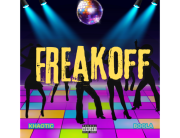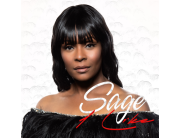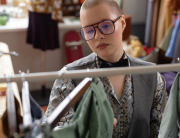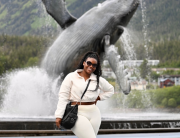A waistcoat , or vest (US and Canada), is a sleeveless upper-body garment.
Circa 1750–1850
The American Revolutionary War brought British influence to the United States and with it came the waistcoat. The waistcoat in the United States originated as formal wear to be worn underneath a coat. Waistcoats became more ornate including color and decor.
Circa late 1800
Waistcoats were styled with new and patterned fabrics but just on the front. Around this time it became popular to use less expensive, contrasting fabric on the back of the waistcoat design, allowing the owner to not spend as much money on the waistcoat as a whole. The fabrics utilized in the creation of these plain, unseen back panels were linen, cotton, or any other type of fabric used to line clothing items.
Circa 1870
Waistcoat collars became longer and visible outside of the coat worn over it. These collars were stiffened and would peak out over the coat’s lapel. For both warmth against cold weather or to show off special weaves and contrasting colors, men often would layer their waistcoats.
Circa 1890
The term vest completely replaced the British term waistcoat in American common vernacular. waistcoat style followed the guidelines of 1700s England using the same fabric for the three-pieces, and sometimes used patterns of plaid or checks for contrast purposes.
Circa 1900
Around the turn of the 20th century, men were still wearing waistcoats for luxurious occasions. waistcoats sometimes even included embroidery or hand-painted designs. At the same time, men began wearing the waistcoat apart from the totality of the three-piece suit and more casually with a variety of bottoms beyond the suit pant (khaki or jean). Waistcoats can be double-breasted with buttons set in a horseshoe pattern. The lower and top buttons may be left undone although not for riding or hunting. Beyond this, some waistcoats were made of certain durable fabrics to withstand being worn for outdoor sport.
Circa 1970
In the 1970s women began wearing waistcoats as part of their work attire. By the late 1990s and early 2000s it became fashionable for women to wear waistcoats as part of their casual wear.
Typology
Today, there are many types of vests. Some types of vests include but are not limited to:
- Biker (motorcycle) vest: The cut-off is a type of vest typically made from a denim or leather jacket with sleeves removed. Popular among bikers in North America and Europe, they are often decorated with patches of logos or pictures of biker related subjects.
- Billiards or pool competitions: vests-waistcoats are worn as formal attire by competitors.
- Fringed vest: hippie movement of the 1960s inspired this folk style.
- Hunting vest: padded sleeveless jacket.
- Sweater vest: This may also be called a slipover, sleeveless sweater, or, in British English, a tank top.
- Puffer vest, body warmer, or gilet: a sleeveless jacket padded with down.
Photo Credits: Lookastic.com







Add Comment
You must be logged in to post a comment.